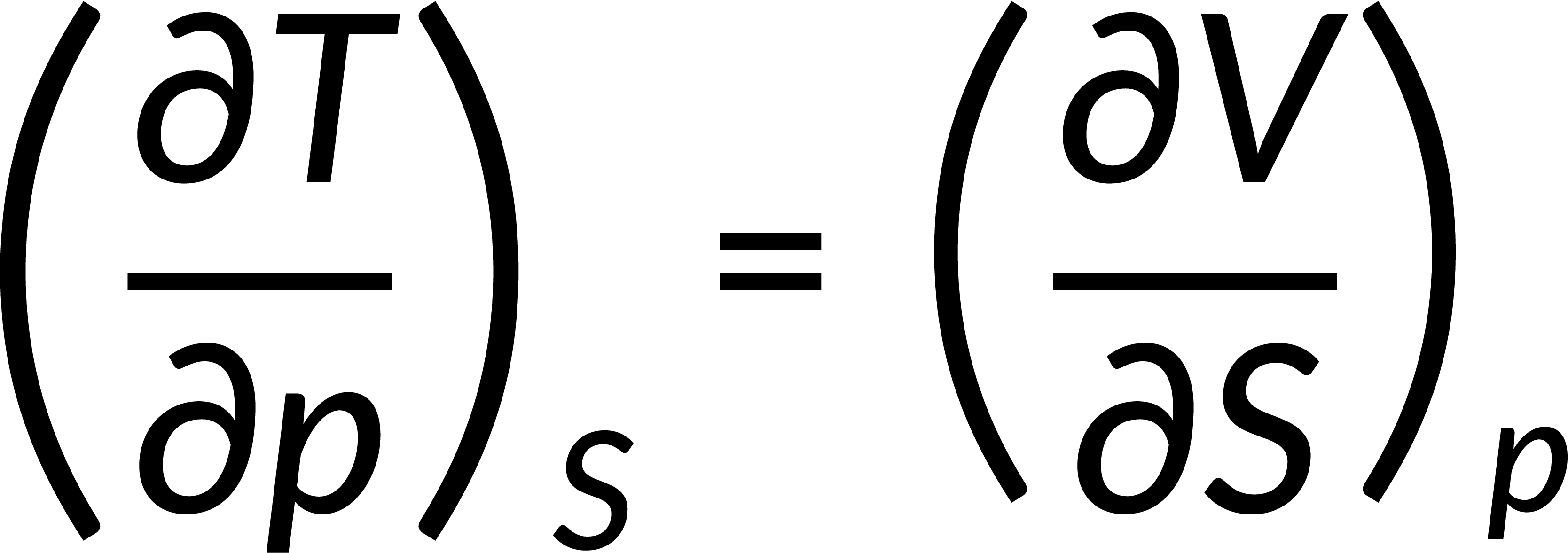20.18 : Maxwell's Thermodynamic Relations
Maxwell's thermodynamic relations are very useful in solving problems in thermodynamics. Each of Maxwell's relations relates a partial differential between quantities that can be hard to measure experimentally to a partial differential between quantities that can be easily measured. These relations are a set of equations derivable from the symmetry of the second derivatives and the thermodynamic potentials.
All thermodynamic potentials are exact differentials. Therefore, their second-order derivative does not depend on the order of differentiation. In the case of Maxwell's relations, the thermodynamic potential is expressed in terms of the partial derivatives of that function. Substituting the values of the partial derivatives gives Maxwell's equations. The four Maxwell's relations are:




These equations relate entropy changes, which are difficult to measure, with changes in other thermodynamic variables, like temperature, volume, and pressure, that are easier to measure. For example, in the last equation, the left-hand side term gives the change in pressure with the temperature at constant volume. This quantity can be easily measured in a laboratory. However, the term on the right-hand side of the equation is more complicated, as it is hard to measure the entropy change with volume at a constant temperature.
Aus Kapitel 20:

Now Playing
20.18 : Maxwell's Thermodynamic Relations
The First Law of Thermodynamics
2.4K Ansichten

20.1 : Thermodynamische Systeme
The First Law of Thermodynamics
4.9K Ansichten

20.2 : Geleistete Arbeit während der Lautstärkeänderung
The First Law of Thermodynamics
3.8K Ansichten

20.3 : Pfad zwischen thermodynamischen Zuständen
The First Law of Thermodynamics
3.0K Ansichten

20.4 : Wärme und freie Ausdehnung
The First Law of Thermodynamics
1.7K Ansichten

20.5 : Innere Energie
The First Law of Thermodynamics
4.3K Ansichten

20.6 : Erster Hauptsatz der Thermodynamik
The First Law of Thermodynamics
4.0K Ansichten

20.7 : Erster Hauptsatz der Thermodynamik: Problemlösung
The First Law of Thermodynamics
2.4K Ansichten

20.8 : Zyklische Prozesse und isolierte Systeme
The First Law of Thermodynamics
2.7K Ansichten

20.9 : Isotherme Prozesse
The First Law of Thermodynamics
3.5K Ansichten

20.10 : Isochore und isobare Prozesse
The First Law of Thermodynamics
3.3K Ansichten

20.11 : Wärmekapazitäten eines idealen Gases I
The First Law of Thermodynamics
2.5K Ansichten

20.12 : Wärmekapazitäten eines idealen Gases II
The First Law of Thermodynamics
2.3K Ansichten

20.13 : Wärmekapazitäten eines idealen Gases III
The First Law of Thermodynamics
2.1K Ansichten

20.14 : Adiabatische Prozesse für ein ideales Gas
The First Law of Thermodynamics
3.0K Ansichten
See More
Copyright © 2025 MyJoVE Corporation. Alle Rechte vorbehalten